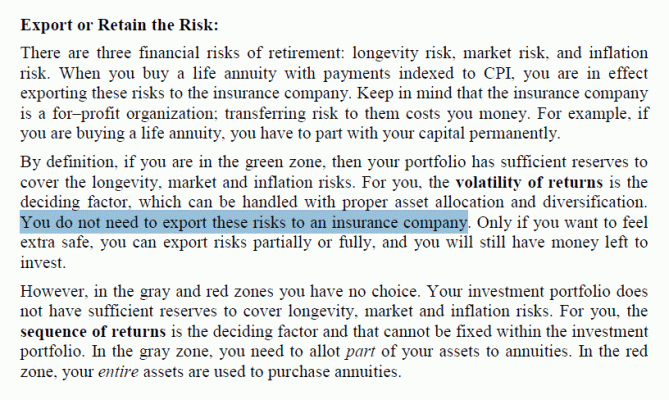ducky911
Recycles dryer sheets
- Joined
- May 18, 2010
- Messages
- 497
+1 Photoguy and I seem to agree completely on this so far.
I really WANT to like this book, so I re-read the first 150 pages and the last 80-100 pages last night. To me the math seemed trivial at best and left me thinking, "and...so?" His writing was tedious, disorganized, and didn't really say anything that isn't obvious IMO. He didn't summarize enough and to me he did not seem especially insightful. I especially loathed his initial examples like the guy who retired with a million dollar portfolio and withdrew $60K/year starting at the great depression, and didn't vary his withdrawals. 6%? Ya think? Who would DO that? It's as though he was writing his book in the 1990's when everyone was wearing rose-colored glasses.
OK, OK, don't beat me up for this post. I'll try reading the middle of the book again tonight. I am really, really trying to keep an open mind. Maybe I was in a negative mood.
Thankyou i thought i was in the minority.
You can retire on on million with 60 k a year if you buy an annuity from Jim.
I felt like i was reading a big sale pitch or watching an infomercial. Make it real hard and people will hire an advisor.
If you look at the web site that was giving the free pdf it has much of the same info.
I for one am not drinking the coolaid.
Last edited:




